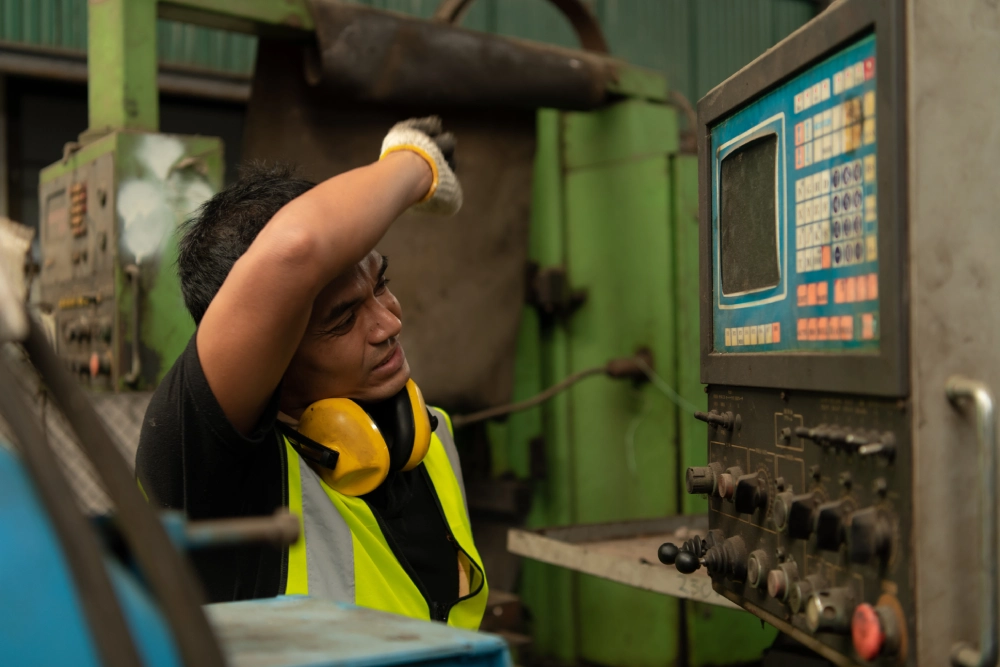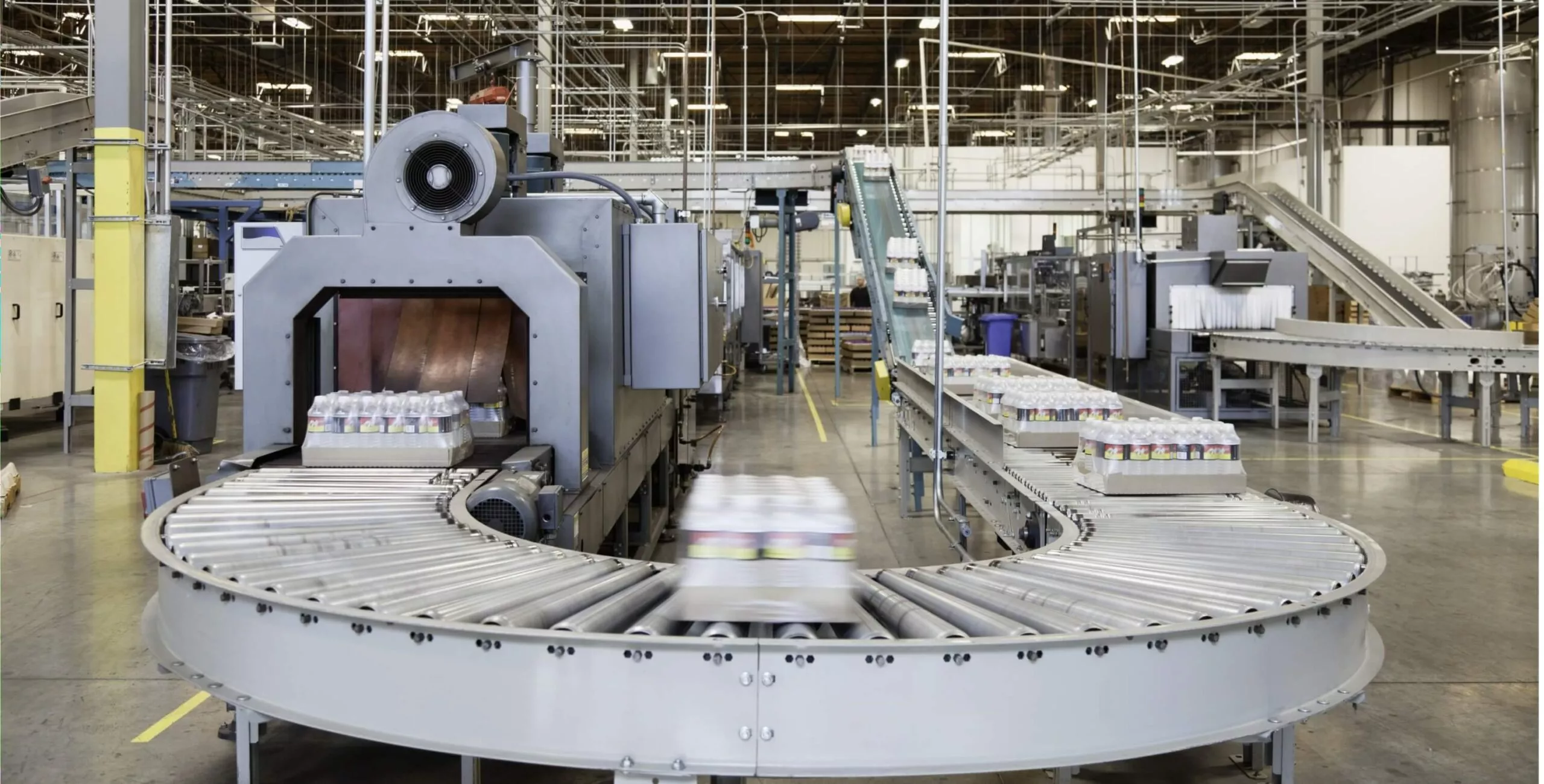Machine downtime can be a real headache for any business that relies on equipment to keep things running smoothly. Whether it’s a sudden breakdown or scheduled maintenance, downtime means lost productivity—and sometimes, extra costs. Understanding downtime and managing it well can make a big difference in how smoothly things run.
In this article, we’ll break down what machine downtime is, show you how to calculate it, explain simple ways to track it and share practical tips to reduce it. By the end, you’ll have a clear understanding of how to keep things running smoothly. Let’s get started!
What is Machine Downtime?
Machine downtime is the time when a machine isn’t working. This can happen for several reasons and can have a major impact on how well a business meets its production goals. When machines aren’t running, it can affect the company’s ability to make products on time and stay profitable. Understanding what causes downtime is the first step to reducing its negative effects and improving overall productivity.
Types of Machine Downtime
Machine downtime can be grouped into two categories: planned and unplanned.
-
Planned Downtime
Planned downtime happens when a machine is taken out of operation on purpose. This can happen due to activities like regular maintenance, software updates, or upgrades to keep the equipment in good working condition. While the production is temporarily stopped, planned downtime is necessary to avoid unexpected breakdowns later. It’s like scheduling a health check-up for your equipment to keep it running smoothly in the long term.
-
Unplanned Downtime
Unplanned downtime is when equipment stops working unexpectedly. This can be caused by a range of issues, such as machine breakdowns, operator mistakes, or problems with inventory or materials. Unlike planned downtime, these disruptions are harder to prepare for and can lead to delays, increased costs, and missed production targets.
What Causes Machine Downtime?
Here are some common reasons why equipment might stop working and how you can avoid them:
-
1
Lack of Training
One major reason for machine downtime is a lack of proper training for operators. Even experienced workers can make mistakes without the right training, which can lead to equipment failures. When operators don’t know how to properly use or maintain machinery, they’re more likely to make errors that could damage the equipment. Inadequate training can also result in poor maintenance practices, making problems worse over time.
-
2
Poor Maintenance
Machines need regular care to stay in good working condition. If maintenance is neglected, it can lead to breakdowns. For example, not lubricating moving parts or forgetting to clean filters can cause wear and tear, making the machine more likely to fail. Regular maintenance is important for preventing these kinds of issues and keeping the equipment running smoothly.
-
3
Frequent Tool or Job Changeovers
Constantly changing tools or switching jobs can also cause a lot of downtime. Every time operators make adjustments; it can wear out the equipment and increase the chances of failure. Not only that, but incorrect setups during these changeovers can cause problems with the quality of the work, leading to rework and even more downtime. Companies need to think carefully about their tool and job changeover process to reduce downtime and ensure everything stays on track.
How to Calculate Machine Downtime?
To keep machine downtime to a minimum, it’s important to understand how much downtime you’re dealing with. This helps you identify which equipment is most likely to fail and which machines are important for your production process.
Here’s a simple way to calculate machine downtime:
-
Determine the Planned Operating Time:
First, figure out how much time you plan to run your machines during a set period. For example, if production is supposed to run 8 hours a day for 20 days a month, that’s 160 hours in a month.
-
Record Downtime:
Next, track the amount of downtime for the month. If you don’t have this data, you can use the downtime numbers from the previous month.
-
Subtract Downtime from Planned Time:
Now, take your planned operating time and subtract the downtime. This will give you the actual operating time.
-
Calculate Downtime as a Percentage:
To better understand your downtime, it’s usually expressed as a percentage.
To find it, use this simple formula: Downtime Percentage = (Planned operating time ÷ Time equipment is down) × 100By calculating downtime this way, you can identify trends and see which equipment causes the most issues. You can also track individual machines to figure out where the problems are happening most often, helping you target areas that need attention.
Impacts of Machine Downtime
Machine downtime can have a major impact on businesses. Here’s how it affects different areas:
- Financial Impact: The financial effects of downtime are often the most noticeable. When machines are down, production slows down, leading to fewer products being made and less revenue coming in. But the costs don’t stop there. Besides the immediate repair costs and lost production time, there are also indirect costs. For example, workers might have to be paid overtime to catch up on delayed orders. Unproductive labor, wasted materials, and the potential loss of future business because of reliability issues can also add up quickly.
- Psychological Impact: Machine downtime can also affect workers’ well-being. It can cause stress and lower morale, especially if it results in pressure to meet production targets. When machines break down, employees may feel the pressure of catching up on delayed work, which can affect their motivation and overall productivity. Addressing these mental and emotional effects is important for keeping the workforce engaged and positive.
- Legal and Safety Impact: Downtime also raises legal and safety concerns. In industries where workers deal with heavy or dangerous machinery, frequent breakdowns could lead to unsafe working conditions. If machines aren’t working properly, there’s a higher risk of accidents or injuries. Also, machines that handle raw materials might cause environmental damage if they fail to process materials correctly. Reducing downtime helps businesses stay compliant with safety and environmental regulations, ensuring both the workers’ safety and the company’s reputation.
How to Reduce Machine Downtime?
-
Invest in Smart Software
Cutting down on machine downtime requires a well-rounded approach. A great way to track and minimize downtime is by using software like CMMS (Computerized Maintenance Management System), such as NEXGEN. A CMMS system automates many tasks involved in planning and scheduling maintenance. It keeps records of all your equipment and helps streamline preventive maintenance activities. It can also manage spare parts and work with predictive maintenance tools to help you stay ahead of potential issues.
-
Proper Training and Education
Another important step is to make sure your team is well-trained. If your staff isn’t properly educated on how to use and maintain the machines, they might make mistakes that lead to more breakdowns or wear and tear. Regular training helps employees understand how to operate the machines correctly and recognize when something isn’t right. Spotting signs early can prevent more serious problems and help keep the machines running longer, saving time and money in the long run.
-
Maintaining Inventory of Parts
It’s always frustrating when a machine breaks down, and you realize you don’t have the right part to fix it. This not only delays repairs but also affects production, making it harder to meet deadlines. That’s why it’s important to keep a well-organized stock of essential spare parts. Having the right parts available when you need them can speed up repairs and minimize downtime. Setting up a system to track parts usage and monitor reorder levels helps ensure you always have what you need on hand, so you’re not left waiting for deliveries during critical moments.
-
Setting Up Error Codes
Using error codes is a practical way to cut down on machine downtime. When machines display error codes, they can quickly point to the cause of the problem, making repairs faster. In some cases, these codes even show issues before a machine completely breaks down, allowing for proactive maintenance. While there are many types of error codes, some of the most common ones include “Used incorrectly,” “PM (preventive maintenance) required,” and “Didn’t follow the Policies and Procedures.” If a machine is acting up, these codes can give a quick clue about what’s wrong, so repairs can be carried out before things get worse.
-
Preventive Maintenance
Preventive maintenance is all about taking care of your equipment before anything goes wrong. Simply put, it’s about making sure things are checked and serviced regularly to help them last longer. For businesses, it’s important to keep machines running smoothly to avoid unexpected breakdowns or disruptions. Preventive maintenance includes things like regular cleaning, inspections, and replacing parts that show signs of wear before they cause a problem. By staying ahead of potential issues, you can keep everything working without interruptions.
-
Regular Inspection
Regular inspection is important for making sure your equipment stays in good condition. By checking for wear and tear regularly, you can spot potential issues before they lead to bigger problems. Inspections also make sure that machines are properly lubricated and all parts are functioning as they should. This proactive approach helps avoid unexpected breakdowns, keeping your equipment running smoothly. So, instead of waiting for a problem to happen, schedule regular inspections to keep everything in top shape.
How to Track Machine Downtime Correctly?
Keeping track of machine downtime requires a structured approach to ensure nothing is overlooked. Here’s how you can do it:
- Identify the machine or unit affected
- Determine if the downtime is planned or unplanned
- Record the downtime duration
- The main downtime causes
- Contact the concerned department that is responsible for maintenance
- Evaluate the loss due to downtime
Final Thoughts
Managing equipment downtime can feel overwhelming, but NEXGEN CMMS software is designed to make it easier. By keeping track of maintenance schedules, monitoring equipment performance, and automating tasks, NEXGEN helps you stay on top of maintenance without breaking a sweat.
The software provides tools to log and analyze data, giving you a clear picture of how your equipment is performing. This helps you plan and address potential issues before they become major problems. With features like real-time updates and user-friendly tracking systems, NEXGEN makes it simple to streamline your maintenance processes.
Whether you’re managing a small operation or a large facility, reducing downtime is about being prepared and proactive. NEXGEN gives you the support and insight you need to maintain your equipment efficiently and keep your operations running smoothly.
Ready to See How NEXGEN Works?
Come and see how NEXGEN, our advanced CMMS Software, can power efficiency gains for your business.





